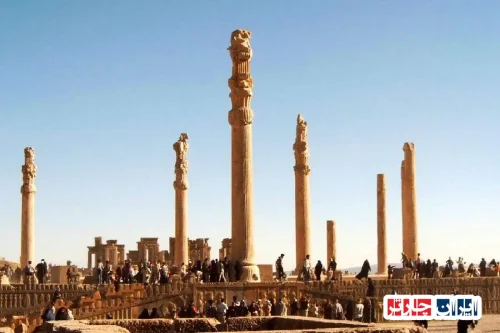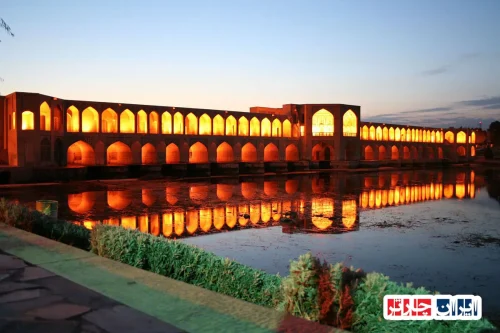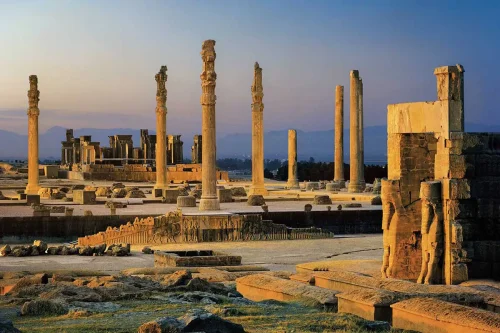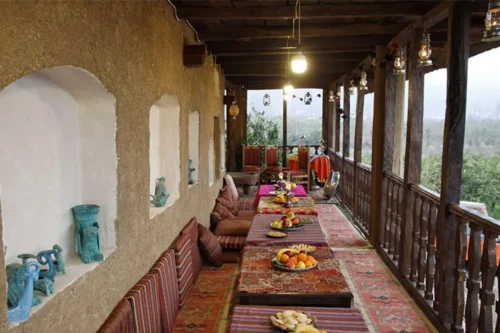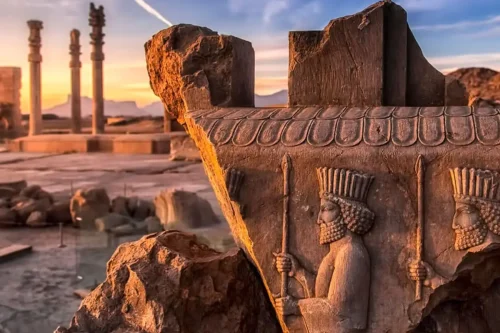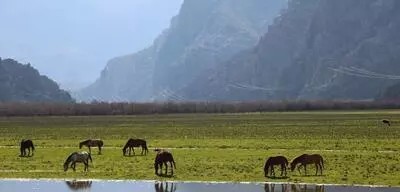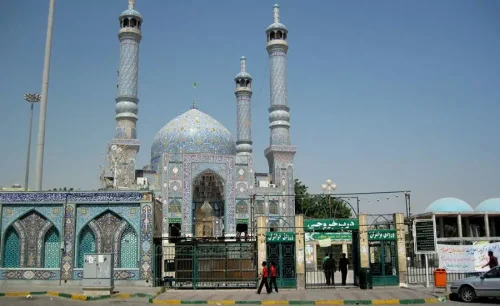News Source : https://www.mcth.ir/news/ctl/ArticleView/mid/508/articleId/64184/نقطه-اصلی-تمدن-و-فرهنگ-ایرانی-انسجام-و-وفاق-همگانی-است-میراثفرهنگی-محور-هویت-ملی،-دینی-و-سیاسی-ماست
The Core of Iranian Civilization and Culture is Cohesion and Unity
Iranian culture is a rich and valuable heritage that has developed over history, uniquely shaping Iranian civilization. This cultural heritage is rooted in the shared values and beliefs of Iranian society, playing a vital role in our national, religious, and political identity.
One of the most important factors in the cohesion and unity of Iranian society is cultural heritage. Over history, this heritage has merged with various beliefs and customs to create cohesion and empathy within Iranian society.
Iran Charter, as an Iranian company, also supports this important aspect of cultural heritage. By providing travel and tourism services, Iran Charter helps all travelers gain a deeper understanding of Iran’s rich and valuable cultural heritage.
In any case, Iran Charter, as a travel and tourism service provider, strives to play a crucial role in preserving and promoting Iranian cultural heritage by offering quality services to travelers.
For more information on Iran Charter’s services, you can contact them at 02191091190 or email info@irancharter.ir.
Importance of Cohesion and Consensus in Iranian Civilization
Cohesion and consensus as the cornerstone of Iranian civilization and culture play a key role in preserving and strengthening our national, religious, and political identity. This cohesion has enabled various Iranian communities, despite ethnic and cultural differences, to achieve progress and development through peaceful coexistence and constructive cooperation. Public consensus not only helps establish social stability but also paves the way for creating policies that align with national values.
Cultural Heritage as the Core of Iran’s National Identity
Cultural heritage, as the core of national identity, forms the main axis of Iranian civilization and culture, fostering cohesion and public consensus. This heritage includes historical artifacts, traditions, customs, and moral values that not only strengthen national identity but also play a vital role in creating solidarity and unity among Iranians. Preserving and expanding this cultural heritage is a crucial responsibility for every society to ensure future generations can also benefit from it.
The Role of Religion in Preserving National Culture
Religion, as a fundamental element in the cultural heritage of Iranians, plays a major role in preserving and stabilizing national, religious, and political identity. Religious beliefs and values not only define the moral framework of society but also effectively create social cohesion and consensus among various sectors of society. Religion, by establishing deep spiritual connections among individuals, lays the groundwork for social solidarity and cooperation.
The Impact of Cultural Heritage on the Political Identity of Iranians
Iranian cultural heritage profoundly influences the formation of the political identity of the community. Cultural values and traditions shape the foundation of national policies and assist politicians in making decisions based on ethical and historical principles. This political identity enhances cohesion and stability in the country, fostering sustainable progress and development.
Universal Cohesion and Civilizational Development
Universal cohesion is considered one of the key elements in the development of Iranian civilization. This cohesion ensures that human and natural resources are optimally utilized, and development projects are carried out with the collaboration and coordination of all societal sectors. Universal cohesion also increases the country’s resilience and stability in facing both internal and external challenges.
Cultural Heritage and Social Accord in Iran
The cultural heritage of Iranians has laid the groundwork for social accord and solidarity within the community. This heritage, by offering a model of peaceful coexistence and mutual respect, encourages individuals to cooperate and interact with one another. The social accord created on the basis of cultural heritage improves cohesion and public consensus, preventing the emergence of tensions and conflicts.
National Identity of Iran from the Perspective of Cultural Heritage
The national identity of Iran, derived from cultural heritage, includes values, beliefs, and a history that binds the people of Iran together. This national identity fosters a sense of belonging and pride in the community and motivates individuals to preserve and advance it. Cultural heritage strengthens cohesion and public consensus by creating this sense of identity.
The Influence of Culture on Politics and Religion in Iran
Iranian culture significantly affects politics and religion in the country. Cultural values provide a framework for government policies to align with the ethical and historical principles of society. This influence ensures that political decisions are more beneficial to the community while religious values also find their appropriate place within policies.
Unity and Cohesion as the Foundation of Iranian Civilization
Unity and cohesion, as the fundamental bases of Iranian civilization, play a vital role in creating public consensus and preserving cultural heritage. This unity among various sectors of society, regardless of ethnic and cultural differences, ensures that the country functions as a unified and cohesive entity. Universal cohesion is the foundation of stability and sustainable development in Iranian civilization.
FAQ
- What is the primary goal of Iranian civilization and culture?
- The primary goal of Iranian civilization and culture is universal cohesion and consensus, which fosters unity and solidarity within the community.
- What important message did the Minister of Cultural Heritage convey during his meeting with cultural managers?
- The Minister of Cultural Heritage stated that the President’s presence at the meeting signifies the high priority the government places on cultural heritage, tourism, and handicrafts.
- What role does cultural diversity play in Iran?
- Cultural diversity in Iran has deep historical roots and is recognized as one of the primary elements that promote cohesion and consensus within the society.
- What exclusive features of Iranian culture did the Minister of Cultural Heritage highlight?
- He emphasized that in analyzing Iranian culture, attention should be paid to its unique features, which include the land’s rich cultural, historical, and civilizational heritage.
- What does consensus mean according to the definition provided by the Minister of Cultural Heritage?
- Consensus means substituting rationality for irrationality, empathy for division, dialogue for problem-solving, ethical conduct, tolerance, and patience towards the beliefs of others.
- What historical foundation does the discourse of consensus have in Iran?
- The discourse of consensus has a long and deep-rooted history in Iran’s history and culture, extending beyond the present or recent past.
- How is consensus related to justice?
- Consensus means justice for oneself and the community, transcending false boundaries and believing that Islam, the revolution, the Imam, and leadership belong to all Iranians.
- How does consensus create a sense of security in society?
- Consensus creates a sense of security for thought, expression, and pen in society, allowing individuals to freely express their beliefs without fear of discrimination or retribution.
- How did the Minister of Cultural Heritage relate consensus to ethical principles?
- He defined consensus within infrastructures such as justice, ethics, honesty, rationality, cohesion, humanity, and integrity.
- What link did the Minister of Cultural Heritage establish between Iranian culture and consensus?
- He stated that Iranian culture, with its rich cultural, historical, and civilizational heritage, plays a major role in creating cohesion and consensus within the society.
- How does consensus transcend false boundaries?
- Consensus transcends false boundaries within forces loyal to Islam, revolution, and leadership, believing that all Iranians share these values.
- What expectations does the Minister of Cultural Heritage have from consensus?
- He expects consensus to mean accepting the rights of others, even with differences in beliefs and opinions, and creating a sense of security for all community members.
- How does Iranian culture and civilization foster social cohesion?
- Iranian culture and civilization, with their rich cultural and historical heritage, strengthen shared values and provide a foundation for unity and cooperation in society.
- What message does the President’s presence at the meeting with cultural figures convey?
- The President’s presence signifies that cultural heritage, tourism, and handicrafts are government priorities and are taken seriously.
- How does consensus aid in solving community issues?
- Consensus helps solve community issues through dialogue and interaction rather than destruction and labeling, ensuring the main discussions remain active.
- What achievement did the Minister of Cultural Heritage mention during the President’s visit to the National Museum?
- He mentioned the cultural, historical, and civilizational richness of Iran, which was viewed and unveiled by the President at the National Museum of Iran as a clear achievement.


